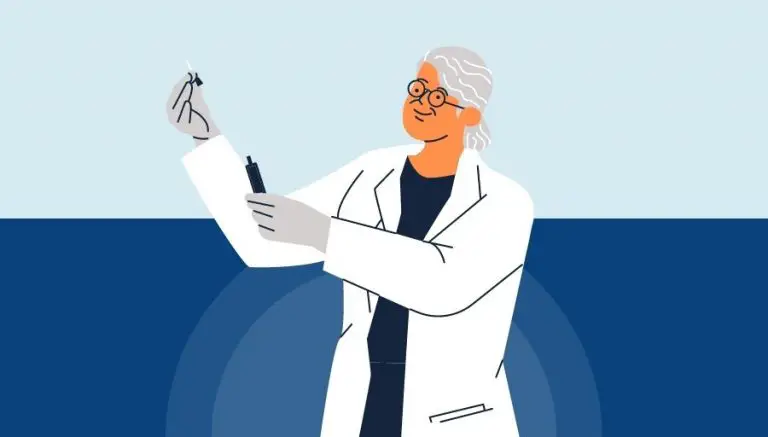How To Use CPT Code 70553
CPT 70553 describes the procedure for magnetic resonance imaging (MRI) of the brain, including the brain stem, without the use of contrast material, followed by contrast material and further sequences. This article will cover the description, official details, procedure, qualifying circumstances, appropriate usage, documentation requirements, billing guidelines, historical information, similar codes and billing examples.
1. What is CPT Code 70553?
CPT 70553 can be used to describe the MRI procedure performed on the brain, including the brain stem, without the use of contrast material. The provider then follows up with the administration of contrast material and takes additional images. This code is used to report the complete MRI study of the brain and brain stem, including both the initial examination and the enhanced images obtained after contrast material is administered.
2. Official Description
The official description of CPT code 70553 is: ‘Magnetic resonance (eg, proton) imaging, brain (including brain stem); without contrast material, followed by contrast material(s) and further sequences.’
3. Procedure
- The patient is positioned appropriately and instructed to remain motionless during the MRI procedure.
- A radio antenna device called a surface coil is placed around the upper part of the head.
- The patient is placed on a sliding table and inserted into the MRI scanner, which generates a strong magnetic field.
- The provider takes images of the brain and brain stem using radio waves to manipulate the magnetic position of atoms in the body.
- The computer converts the collected data into cross-sectional black and white images of the brain and brain stem.
- The initial examination is performed without the use of contrast material.
- After the initial examination, contrast material is administered intravenously.
- The provider obtains an additional series of enhanced images.
- The images are reviewed to determine if more images are necessary.
4. Qualifying circumstances
CPT 70553 is used when a provider performs an MRI study of the brain and brain stem without the use of contrast material, followed by the administration of contrast material and the acquisition of further sequences. This procedure is typically performed to diagnose, manage, and treat diseases affecting the brain and brain stem.
5. When to use CPT code 70553
CPT code 70553 should be used when the provider performs an MRI study of the brain and brain stem without contrast material, followed by the administration of contrast material and the acquisition of further sequences. This code is appropriate when the complete MRI study of the brain and brain stem is performed, including both the initial examination and the enhanced images obtained after contrast material is administered.
6. Documentation requirements
To support a claim for CPT 70553, the provider must document the following information:
- Indication for the MRI study of the brain and brain stem
- Details of the procedure, including the use of contrast material and the acquisition of further sequences
- Date and time of the procedure
- Any relevant findings or abnormalities observed during the examination
- Signature of the provider performing the procedure
7. Billing guidelines
When billing for CPT 70553, ensure that the procedure is performed as described in the official description. Use the appropriate CPT code based on whether contrast material is used or not. It is important to follow payer guidelines regarding the reporting of contrast material separately, if applicable. Modifier 26 should be appended to the radiology code if only the professional component is being reported, while modifier TC should be appended if only the technical component is being reported. However, payer policies may vary, so it is important to review individual guidelines.
8. Historical information
CPT 70553 was added to the Current Procedural Terminology system on January 1, 1992. There have been no updates to the code since its addition.
9. Examples
- A patient undergoes an MRI study of the brain and brain stem without contrast material, followed by the administration of contrast material and the acquisition of further sequences to evaluate a suspected brain tumor.
- A provider performs an MRI study of the brain and brain stem without contrast material, followed by the administration of contrast material and the acquisition of further sequences to assess the extent of a recent stroke.
- An individual undergoes an MRI study of the brain and brain stem without contrast material, followed by the administration of contrast material and the acquisition of further sequences to investigate the cause of chronic headaches.
- A patient receives an MRI study of the brain and brain stem without contrast material, followed by the administration of contrast material and the acquisition of further sequences to evaluate the progression of multiple sclerosis.
- A provider performs an MRI study of the brain and brain stem without contrast material, followed by the administration of contrast material and the acquisition of further sequences to assess the presence of abnormalities in a patient with epilepsy.
- An individual undergoes an MRI study of the brain and brain stem without contrast material, followed by the administration of contrast material and the acquisition of further sequences to investigate the cause of unexplained neurological symptoms.
- A patient receives an MRI study of the brain and brain stem without contrast material, followed by the administration of contrast material and the acquisition of further sequences to evaluate the presence of vascular malformations.
- A provider performs an MRI study of the brain and brain stem without contrast material, followed by the administration of contrast material and the acquisition of further sequences to assess the extent of traumatic brain injury.
- An individual undergoes an MRI study of the brain and brain stem without contrast material, followed by the administration of contrast material and the acquisition of further sequences to investigate the cause of cognitive decline.
- A patient receives an MRI study of the brain and brain stem without contrast material, followed by the administration of contrast material and the acquisition of further sequences to evaluate the presence of intracranial tumors.



